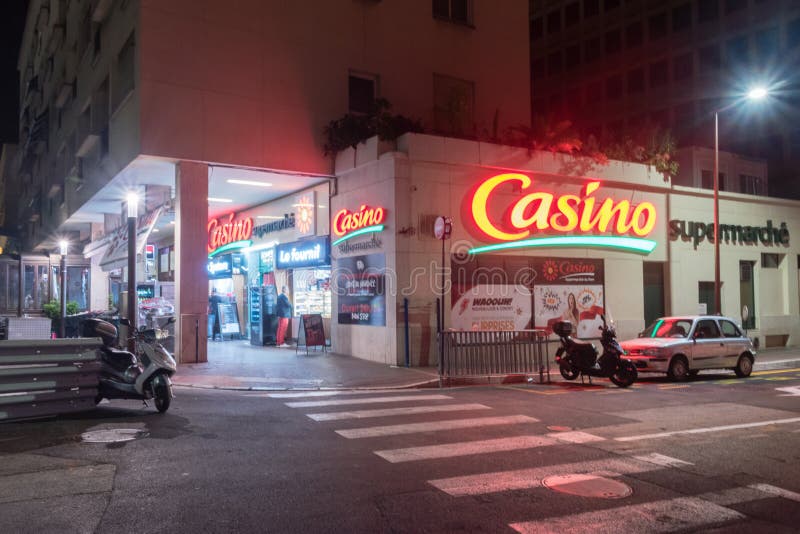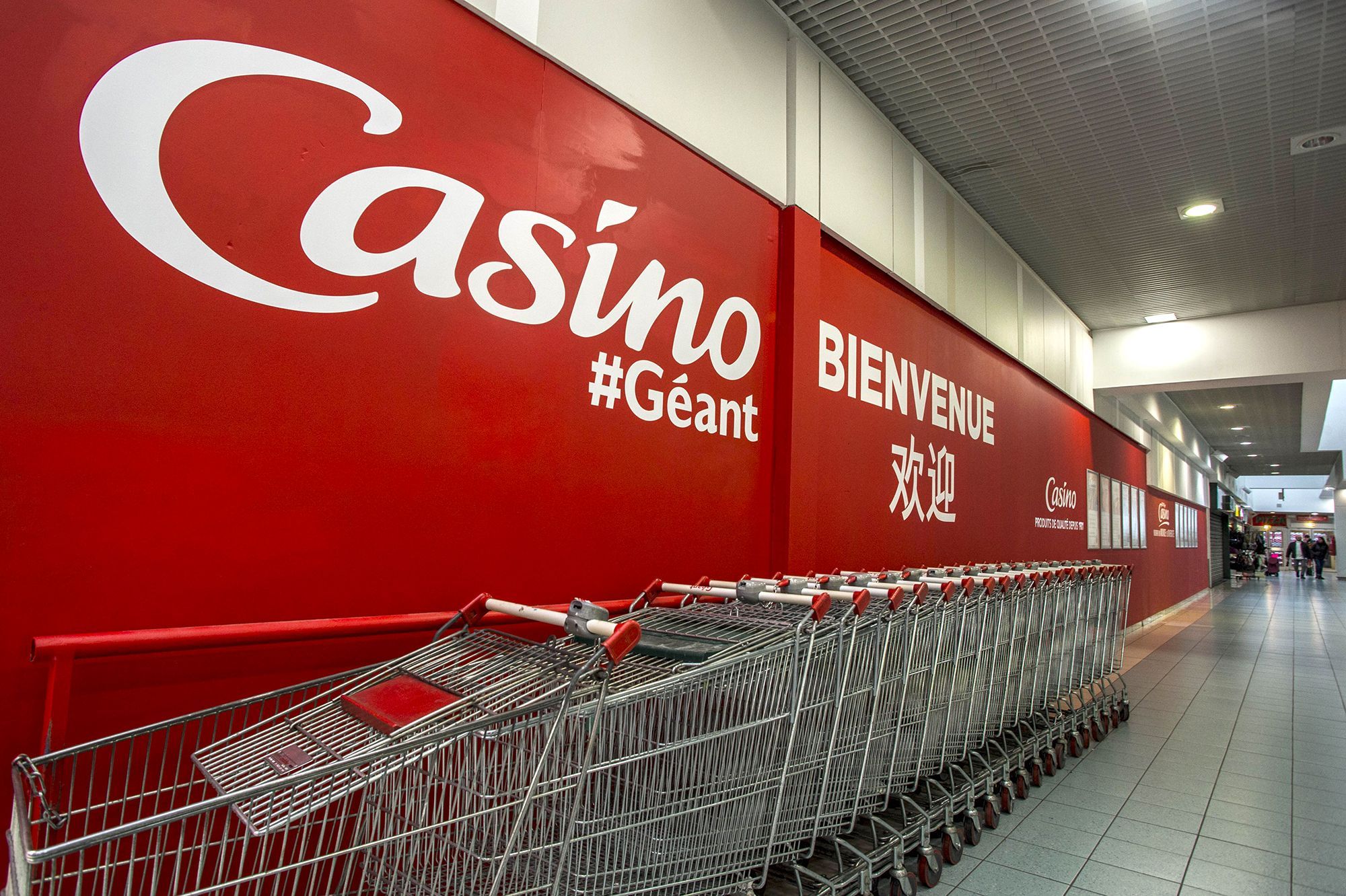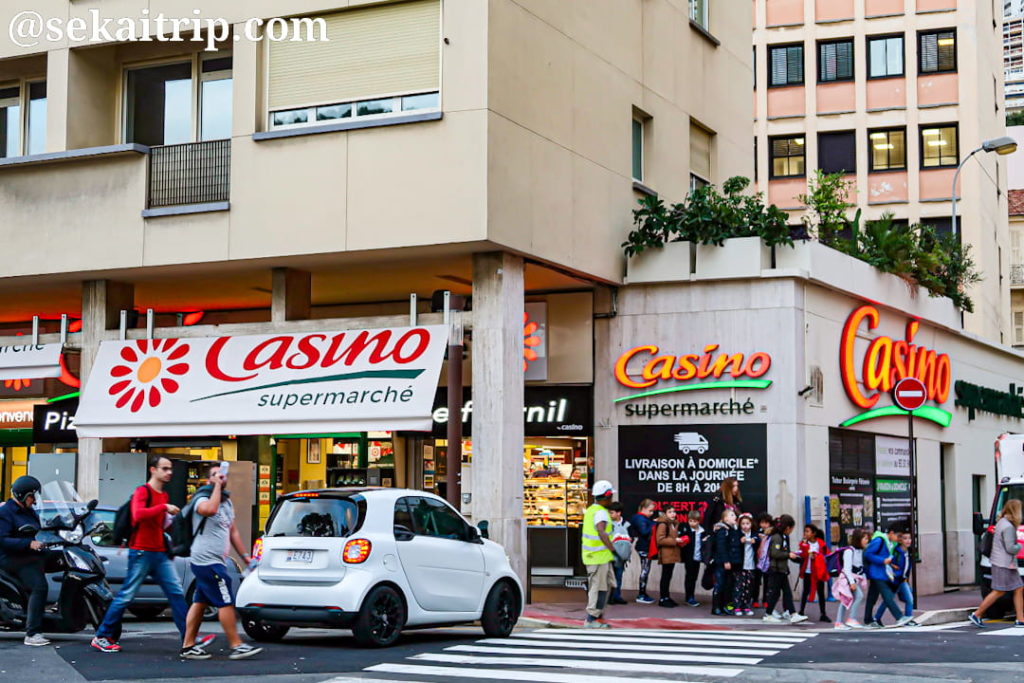Casino Supermarche Monaco
- Casino Supermarche Monaco
- Casino Supermarche Monaco Buffet
- Casino Supermarche Monaco Restaurant
- Casino Supermarche Monaco
- Petit Casino Supermarche Monaco
This is a list of supermarket chains in Monaco.
- Carrefour[1]
- Casino Supermarché[2]
- Intermarché Express[3]
- Marché U (Système U)[4]
- Picard Surgelés[5]
- Spar[6]
Defunct brands[edit]
For more than a century, its stage has been the setting for international operatic creations, prestigious concerts, and exceptional ballets. Its series of 'Gaming Rooms' are marvellously decorated with stained glass windows, sculptures, and allegorical paintings. The Casino de Monte-Carlo is open to players from 2 pm until the last table closes. Casino de Monte-Carlo (from Monaco. The Group took over the chain Thriftymart Inc stores which then became Smart & Final Iris.This is why: 3, 2018 New York City RFID Journal LIVE!Ocado’s shares jumped to their highest level since the company signed a separate deal with another unnamed retailer in June. This legendary casino has been updated through the centuries to offer its prestigious customers a full range of games that will satisfy players of all levels. With a wide range of games to choose from, everyone will find entertainment, thrills, excitement and surprise to create unforgettable experiences. Things to do in Monaco. This is a list of supermarket chains in Monaco. Carrefour; Casino Supermarch. This Monaco-related article is a stub. You can help Wikipedia by expanding it This page was last edited on 18 January 2021, at 22:54 (UTC). Text is available under the Creative Commons.
- Rotana
- Écomarché[7]
- Zall
- Kosmin
- Zerbas
- Galaxias
- Tom
- Economy (closed of 2008, shops later Closed the 2014 Market In )
References[edit]
- ^Monaco Carrefour.fr
- ^Magasin Casino : Supermarché Casino, Géant Casino, Casino Cafétéria – Monaco 98 - Casino.frArchived 2013-01-19 at the Wayback Machine
- ^INTERMARCHE EXPRESS SA Escosup Monaco 98000 Infos pratiques
- ^http://www.marcheu-montecarlo.com/portailu/local/pg_d_sysu_magasin_accueil
- ^PICARD Beausoleil - Votre magasin Picard à Beausoleil Vente de produits surgelés à PICARD Beausoleil - Picard
- ^'SPAR MONACO Magasin SPAR MONACO 17 Avenue des Spelugues Commerce MONACO'. Archived from the original on 2013-07-21. Retrieved 2013-02-07.
- ^Magasin Intermarche Monaco SA Escosup (Écomarché) : Prospectus et Catalogues (Intermarche Nice, Menton)


| Casino de Monte-Carlo | |
|---|---|
Casino de Monte-Carlo in the Principality of Monaco | |
| Location | Monte Carlo, Monaco |
| Opening date | 1863; 158 years ago |
| Signature attractions | Opéra de Monte-Carlo |
| Casino type | Land-Based |
| Coordinates | 43°44′22″N7°25′44″E / 43.73944°N 7.42889°ECoordinates: 43°44′22″N7°25′44″E / 43.73944°N 7.42889°E |
| Website | www.montecarlosbm.com/en/casino-monaco/casino-monte-carlo |
The Monte Carlo Casino, officially named Casino de Monte-Carlo, is a gambling and entertainment complex located in Monaco. It includes a casino, the Opéra de Monte-Carlo, and the office of Les Ballets de Monte-Carlo.[1]
The Casino de Monte-Carlo is owned and operated by the Société des bains de mer de Monaco, a public company in which the Monaco government and the ruling royal family have a majority interest. The company also owns the principal hotels, sports clubs, foodservice establishments, and nightclubs throughout the Principality.
The citizens of Monaco are forbidden to enter the gaming rooms of the casino.[2]
History[edit]
The idea of opening a gamblingcasino in Monaco belongs to Princess Caroline,[3] a shrewd, business-minded spouse of Prince Florestan. Revenues from the proposed venture were supposed to save the House of Grimaldi from bankruptcy. The ruling family's persistent financial problems became especially acute after the loss of tax revenue from two breakaway towns, Menton and Roquebrune, which declared independence from Monaco in 1848 and refused to pay taxes on olive oil and fruit imposed by the Grimaldis.
In 1854, Charles, Florestan's son and future Prince of Monaco, recruited a team of Frenchmen—writer Albert Aubert and businessman Napoleon Langlois—to devise a development plan and write a prospectus to attract 4 million francs needed to build a spa for the treatment of various diseases, a gambling casino modeled from the Bad Homburg casino, and English-styled villas. Granted the concession of 30 years to operate a bathing establishment and gaming tables, Aubert and Langlois opened the first casino at 14 December 1856 in Villa Bellevu. Intended to be only a temporary location, the building was a modest mansion in La Condamine.
In the late 1850s, Monaco was an unlikely place for a resort to succeed. The lack of roads needed to connect Monaco to Nice and the rest of Europe, and the absence of comfortable accommodations for visitors, as well as the concessionaires' failure to publicize the new resort, resulted in far fewer customers than was originally anticipated. Unable to raise the capital needed to operate the money-losing enterprise, Aubert and Langlois ceded their rights to Frossard de Lilbonne, who in turn passed it to Pierre Auguste Daval in 1857.[4]
During this initial period, the casino had been moved several times, until it finally ended up in the area called Les Spelugues (English: The Caves). Construction at this site began on 13 May 1858 to designs of the Parisian architect Gobineau de la Bretonnerie[5] and was completed in 1863. Gobineau de la Bretonnerie also designed the neighboring Hôtel de Paris Monte-Carlo (constructed in 1862).[6]
Although the casino began to make a profit in 1859, Daval was not up to the task. Just like his predecessors, he was incompetent and lacked the ability to bring the gambling enterprise to the scale envisioned by Princess Caroline.[7] Frustrated, she dispatched her private secretary M. Eyneaud to Germany, hoping to recruit François Blanc, a French entrepreneur and operator of the Bad Homburg casino. Blanc declined the offer. It took a lot of time and persuasion on the part of Princess Caroline to convince the Blancs to move to Monaco. Princess Caroline even appealed to Madame Blanc, whom she befriended during her first visit to Bad Homburg, with a suggestion that Monaco's mild climate would be good for Madame Blanc's ill health.
Finally, in 1863 François Blanc agreed to take over Monaco's casino business. To manage the new venture, a company—the Societe des Bains de Mer et du Cercle des Etrangers—was formed with capital of 15 million francs. Among the prominent investors were Charles-Bonaventure-François Theuret, Bishop of Monaco, and Cardinal Pecci, the future Pope Leo XIII. Blanc became the single majority stockholder in the company and received a 50-year concession, which would last until 1913. Blanc used his connections to quickly raise the required capital, and began the massive construction. On Blanc's insistence, the Spelugues area where the gambling complex was located was renamed to make it sound more attractive to casino visitors. A few suggestions were considered, and the name Monte Carlo was chosen in Prince Charles' honor.
In 1878–79, the casino building was transformed and expanded to designs of Jules Dutrou (1819–1885) and Charles Garnier, the architect who had designed the Paris opera house now known as the Palais Garnier. François Blanc knew Garnier because Blanc had provided a loan of at least 4.9 million gold francs to the cash-strapped government of the French Third Republic, so that the opera house, which had been started in 1861, could be completed. It had finally opened in 1875. The alterations to the Casino de Monte Carlo included the addition of a concert hall (designed by Garnier and later named the Salle Garnier), located on the side of the casino facing the sea, and the redesign and expansion of the gaming rooms and public spaces, mostly carried out by Dutrou on the side of the casino facing the Place du Casino, where the Hôtel de Paris Monte-Carlo and the were also located.[8]
In 1880–81, the casino was expanded again, to the east of Dutrou's Moorish Room, by the addition of the Trente-et-Quarante Gaming Room, also designed by Garnier. Subsequent additions and expansions, and the remodeling of the Trente-et-Quarante Gaming Room into the Salle des Américains, have mostly obliterated Garnier's contributions to this part of the casino, except for some ceiling decorations.[9] In 1898–99, the Salle Garnier was remodeled by architect Henri Schmit, primarily in the stage area, so that it would be more suitable for opera and ballet performances. However, much of Garnier's original facade and the interior design of the auditorium itself remain intact.[8] Despite all of the later additions and modifications, the casino still has a distinctly Beaux Arts style.
In 1921, the first Women’s Olympiad was held at the casino gardens.
Casino Supermarche Monaco
Until recently, the Casino de Monte-Carlo has been the primary source of income for the House of Grimaldi and the Monaco economy.

Casino facilities[edit]
The casino has facilities to play a variety of games which include:
- Different kinds of roulette
1913 Gambler's fallacy[edit]
The most famous example of the gambler's fallacy occurred in a game of roulette at the Casino de Monte-Carlo in the summer of 1913, when the ball fell in black 26 times in a row. This was an extremely uncommon occurrence, although no more nor less common than any of the other 67,108,863 sequences of 26 red or black. Gamblers lost millions of francs betting against black, reasoning incorrectly that the streak was causing an 'imbalance' in the randomness of the wheel, and that it had to be followed by a long streak of red.[10]
Breaking the bank[edit]
- In 1873, Joseph Jagger gained the casino great publicity by 'breaking the bank at Monte Carlo' by discovering and capitalizing on a bias in one of the casino's roulette wheels. Technically, the bank in this sense was the money kept on the table by the croupier. According to an article in The Times in the late 19th century, it was thus possible to 'break the bank' several times. The 1892 song 'The Man Who Broke the Bank at Monte Carlo', made famous by Charles Coborn, was probably inspired by the exploits of Charles Wells, who 'broke the bank' on many occasions on the first two of his three trips.
- According to the book Busting Vegas by Ben Mezrich, a team of blackjack players recruited from the Massachusetts Institute of Technology by team-leader Victor Cassius and Semyon Dukach attempted to break the bank at Monte Carlo with the assistance of a team-play-based system. The book describes how the management of Monte Carlo responded to the success of the team. According to Semyon the account in Busting Vegas is accurate aside from the fact that the team was made up of himself, Andy Bloch and another player he refers to as 'Katie'.[11]
In popular culture[edit]
- James Bond, a fictional British spy, is often associated with the Casino de Monte-Carlo.
- Monaco and its casino were the locations for a number of James Bond movies, including Never Say Never Again and GoldenEye, as well as for the 'Casino Royale' episode of the CBS's Climax!television show.
- The casino served as a filming location for the 2004 film Ocean's Twelve.[12]
- The casino makes an appearance in Condorman, The Castle of Cagliostro and Madagascar 3: Europe's Most Wanted.

Other mentions[edit]
- The Monte Carlo method, a computational approach which relies on repeated random sampling to solve difficult numerical problems, was named after the Casino de Monte-Carlo by physicist Nicholas Metropolis.[13]
Gallery[edit]
The Casino de Monte-Carlo main entrance
View of the casino illuminated at dusk
The main hall
Roulette tables
The gardens behind the casino with the Salle Garnier in the background
South balcony
Casino Supermarche Monaco Buffet
See also[edit]
Casino Supermarche Monaco Restaurant
References[edit]
Casino Supermarche Monaco
Notes
- ^'Le Casino de Monte-Carlo joue la carte de l'ouverture'. nicematin.com. Archived from the original on 2012-08-05.
- ^The rule banning all Monegasques from gambling or working at the casino was an initiative of Princess Caroline, de facto regent of Monaco, who amended the rules on moral grounds. The idea that the casino was intended only for foreigners was even emphasized in the name of the company that was formed to operate the gambling business, Societe des Bains de Mer et du Cercle des Etrangers (English: Company of Sea Bathing and of the Circles from Abroad). Source: Edwards, Anne (1992). The Grimaldis of Monaco: The Centuries of Scandal—The Years of Grace. William Morrow. ISBN978-0-688-08837-8..
- ^Edwards, Anne (1992). The Grimaldis of Monaco: The Centuries of Scandal - The Years of Grace. William Morrow. ISBN978-0-688-08837-8..
- ^'Chronology of Gambling (1852-1900)'. gamblinghistory.info.
- ^Folli & Merello 2004, pp. 112, 114.
- ^Denby p. 92.
- ^Sharma, K.K. (1999). Tourism and Culture. New Delhi: Sarup & Sons. ISBN81-7625-056-2.
- ^ abFolli & Merello 2004, pp. 116–117, 136; Bouvier 2004, pp. 190–192.
- ^Folli & Merello 2004, pp. 132–133.
- ^Lehrer, Jonah (2009). How We Decide. New York: Houghton Mifflin Harcourt. p. 66.
- ^'ThePOGG Interviews - Semyon Dukach - MIT Card Counting Team Captain'. Retrieved 10 November 2012.
- ^'OCEANS 12 - Production notes - About the production'. CinemaReview.com. Retrieved December 1, 2013.
- ^Metropolis 1987.
Sources
- Bonillo, Jean-Lucien, et al. (2004). Charles Garnier and Gustave Eiffel on the French and Italian Rivieras: The Dream of Reason (in English and French). Marseilles: Editions Imbernon. ISBN9782951639614.
- Bouvier, Béatrice (2004). 'Inventaires' in Bonillo et al. 2004, pp. 186–205.
- Folli, Andrea; Merello, Gisella (2004). 'The Splendour of the Garnier Rooms at the Monte Carlo Casino' in Bonillo et al. 2004, pp. 112–137.
- Denby, Elaine (2004). Grand Hotels: Reality and Illusion. London: Reaktion Books. ISBN9781861891211.
- Metropolis, N. (1987). 'The beginning of the Monte Carlo method'(PDF). Los Alamos Science (1987 Special Issue dedicated to Stanislaw Ulam): 125–130.
External links[edit]
| Wikimedia Commons has media related to Casino de Monte Carlo. |